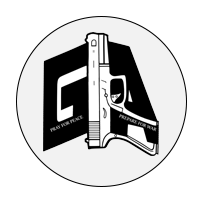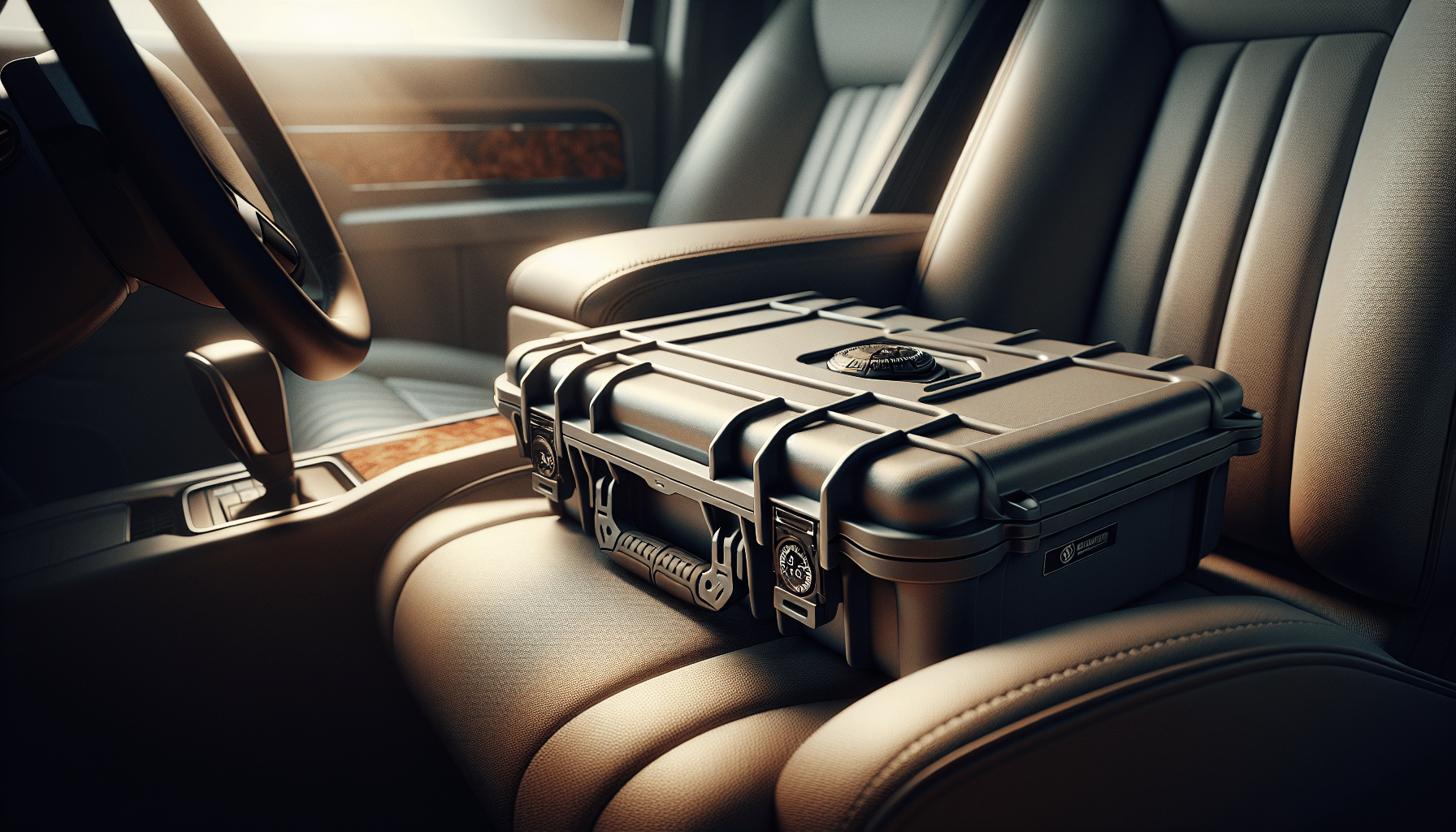Have you ever wondered what the safest way to transport your firearm is? Whether you’re headed to a shooting range, embarking on a hunting trip, or relocating, ensuring that your firearm is transported safely and legally is crucial. A little thoroughness can go a long way in keeping you and others safe. You might be surprised at the number of nuances and rules that come into play, so let’s navigate this territory together.

Understanding Legal Requirements
Before you even think about packing up your firearm, it’s essential to get familiar with the legal requirements in your area. Every state, and sometimes even individual cities, can have different rules that dictate how a firearm should be transported. It can feel like a maze, but knowing these laws can save you a lot of trouble down the line.
Federal Laws
In the United States, there are federal laws that ensure consistency across states to a certain degree. The Firearm Owners Protection Act is one such law. It allows you to transport firearms across state lines for lawful purposes but requires them to be unloaded and out of reach, often in the trunk of your vehicle. However, federal laws only mark the baseline for legalities, and states can impose more stringent regulations.
State and Local Laws
State and local laws tend to hold the nuances. For instance, some states require your firearm to be in a locked container while being transported, whereas others may not require a lock but do mandate that the firearm is not accessible from the passenger compartment. It’s vital to look up and adhere to the specific laws of the states you’re traveling through—not just the one where you started your journey.
Preparing Your Firearm for Transport
Once you’re clear on legal commitments, the next step is preparing your firearm correctly. This isn’t just about sticking it in the backseat and calling it a day. It involves a couple of careful steps to ensure safety and compliance.
Unloading Your Firearm
The first rule of thumb is to always unload your firearm before transport. This eliminates the immediate risk of accidental discharge. Once your firearm is completely unloaded, check it again. Then double-check it. Making sure that there are no rounds in the chamber is the fundamental step toward ensuring safe travel.
Using Proper Storage Containers
A proper storage container is your firearm’s best friend on the road. This often comes down to a hard case that can be locked. These cases come in various sizes, so you’re bound to find one that suits your firearm snugly. The goal is not only to prevent theft but also to ensure the gun isn’t bouncing around, potentially leading to damage or misalignment.
Transporting Ammunition
You might think ammunition doesn’t require as much care, but transporting it warrants just as much attention as the firearm. Like the firearm, your ammunition should also be stored securely.
Separate Storage
Keeping ammunition stored separately from your firearm is a best practice. It can be stored in a locked container, like a separate compartment or a different part of the vehicle, ensuring they’re not easily accessible together. This practice aligns with legal stipulations and adds an extra layer of safety, preventing unauthorized access.
Choosing The Right Vehicle
You might not always have control over this one, but your choice of vehicle does play a part in how to best transport firearms safely. Some vehicles naturally lend themselves better to this purpose.
Sedans and Trunks
For example, a sedan allows you to utilize a trunk, which keeps firearms out of the passenger compartment and increases compliance with many state laws. Trunks naturally create a separation between where the gun is stored and where the people are seated, discouraging impulsive access.
Pickup Trucks and SUVs
If you’re using a pickup truck or an SUV, the cabin space might not separate well as in a sedan. In these cases, extra diligence in securing your firearms and ammunition is paramount. Apps and online resources can help track your compliance as you drive through different state lines.

Considerations for Air Travel
Different rules apply when you’re traveling by air. The Transportation Security Administration (TSA) has its own set of rules that must be followed for any legal air travel with firearms.
Declaring Your Firearm
The TSA mandates that firearms must be declared at the check-in counter. You cannot carry them in your carry-on baggage, which should be a no-brainer. The firearm must be unloaded, and both the firearm and any ammunition have to be placed inside a hard-sided, locked container. Always check the specific airline’s rules, as they can have additional requirements.
Safety Accessories
Never underestimate the benefit of investing in safety accessories designed specifically for firearm transportation. These additions aren’t just upsells; they genuinely play a pivotal role in safe transport.
Locks and Trigger Guards
Locks and trigger guards are universally valuable. Trigger guards can ensure that mishandling does not lead to an accidental discharge, while a lock offers peace of mind, knowing only those with the key or combination can access the firearm.
High-Quality Cases
A high-quality case is worth its weight in gold. It protects the firearm from physical elements and suspicious minds. These cases can also act as a deterrent, with some allowing discreet, non-obvious firearm storage.
Learning From Training Programs
At Green Line Arms, learning doesn’t stop with the sale of a gun. Training programs are an invaluable resource for both beginners and veterans to hone their skills in safe handling and transport. Whether it’s through workshops, programs, or simulation experiences, there’s always more to learn.
Courses and Experiences
Participate in courses and hands-on experiences that put theory into practice. Green Line Arms provides lessons that not only cover gun safety during usage but also emphasize the importance of proper transport methods.
Encouraging Responsible Ownership
With firearm ownership comes great responsibility. At Green Line Arms, we emphasize not just on the mechanics and handling, but on the widespread effect of responsible ownership of firearms. A well-informed owner is a safe one, and community well-being thrives on individuals respecting and adhering to safety protocols.
Community Engagement
By engaging with community events and discussions facilitated by Green Line Arms, you get to share insights and learn from others’ experiences. This can provide a broader perspective on what works well, different challenges, and novel solutions they have come up with.
Shooting Range Tips
When you’re off to the shooting range, a safe firearm and ammunition transport become even more pertinent. It’s not just about reaching there safely, but ensuring everyone at the range feels secure in their surroundings.
Preparing for the Range
Once at the range, remember that unloading your firearm is a rule, not a suggestion. Keep it unloaded until it’s your turn to shoot. This keeps things in check not just legally, but builds a culture of trust among fellow enthusiasts.
Sharing Knowledge
While at the range, take the opportunity to share experiences with others. What works for you in transporting firearms? Maybe you have a unique way of securing them in your SUV that others could benefit from. Sharing this kind of knowledge reinforces collective safety.
Hunting Trip Essentials
Hunting trips might take you through various jurisdictions, thus magnifying the importance of knowing transport laws. Beyond that, there’s equipment to consider, each with its own best practices.
Organizing Your Gear
Proper organization can simplify transport. For instance, use color-coded labels or tags to distinguish between live and spent ammunition. This minimizes any potential confusion during a high-paced outing.
Eco-Conscious Considerations
Mind environmental considerations by following regulations specific to natural reserves or parks you might travel through. It’s not only about weapon safety but respecting wildlife and the spaces you hunt in.
First Responder Preparedness
Being prepared isn’t just about the gun. It’s as much about being ready to respond to emergencies, and that’s where first responder preparedness comes into play.
First Responder Training at Green Line Arms
Green Line Arms offers training that aids in enhancing your preparedness for emergencies, such as gunshot wound management. This type of training complements your ability to handle firearms safely.
Medical Kits
Having a medical kit handy could be a game-changer, especially in remote locations. First aid kits specifically designed for range or hunting trips can ensure you can render aid while more professional services are on the way.
Your Go-To Resource: Green Line Arms
Ultimately, your journey as a responsible gun owner is well-supported by Green Line Arms. From expertise in legal advising to a broad collection of necessary accessories and learning programs, consider this your local hub for all things firearm-related.
Comprehensive Support and Resources
Visit Green Line Arms in Pensacola, Florida for more ingrained advice. From engaging, hands-on experiences to products that support safe and enjoyable firearms use, Green Line Arms thrives on helping people like you build a safer community.
By keeping these steps in mind, you can ensure that transporting your firearm is not only safe but aligns with the legal requirements and best practices we’ve discussed. Knowledge paired with the right equipment and advice ensures you’re prepared for any journey, making militant yet friendly ownership the norm. So go ahead, learn, prepare, and most importantly, enjoy the peace of mind that comes with responsible gun ownership.




